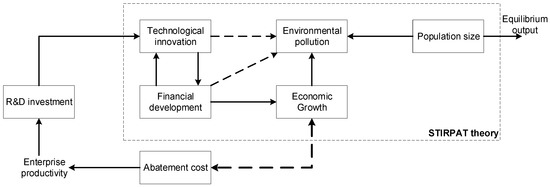IJERPH | Free Full-Text | Greening China’s Growth: Assessing the Synergistic Impact of Financial Development and Technological Innovation on Environmental Pollution Reduction—A Spatial STIRPAT Analysis

To achieve sustainable economic development in China, it is crucial to balance economic growth and environmental protection. Financial capital and technology can contribute positively to environmental pollution control. This study employs the Cournot model to examine the impact of financial development and technological innovation on environmental pollution at the micro level. It utilizes the spatial STIRPAT model to analyze inter-provincial panel data from China between 2005 and 2020. The results show that China’s ecological environment pollution exhibits significant spatial dependence, and heavily polluted areas tend to agglomerate. While improving financial development can increase regional environmental pressure, positive spatial spillover improves environmental quality in neighboring areas. Conversely, technological innovation reduces local ecological pressure, with negative spatial spillover effectively curbing environmental pollution in surrounding regions. The results support the environmental Kuznets curve (EKC) hypothesis, which posits an inverted U-shaped relationship between economic growth and environmental pressure, while population growth increases environmental pressure. The findings are robust and have important policy implications.
